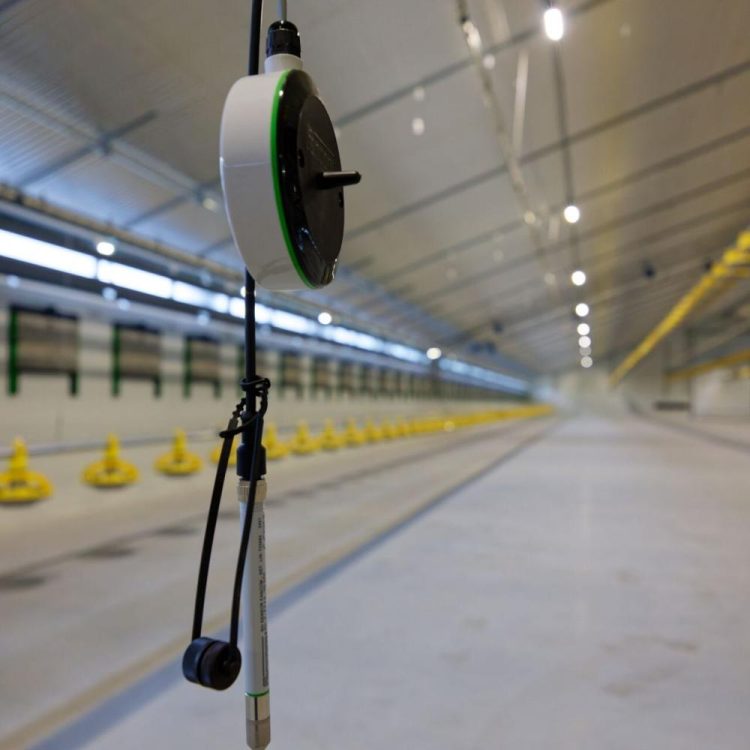Maintaining the correct relative humidity (RH) is crucial for animal welfare and productivity in poultry houses because the impact of relative humidity on animal growth and health can be profound. If the RH is too high or too low, the birds may suffer from health issues which can also impact negatively on their performance and growth. Excessive RH will cause wet litter which can result in foot problems and skin disorders. It also promotes the growth of bacteria and moulds, which can cause respiratory problems.
Relative humidity in poultry houses
Humidity, or moisture, in the house is caused by the heating system, leakage or water spilled from the drinkers and by the natural production of vapour when the poultry breathe. Seasonal influences such as the outdoor conditions can cause variations in the relative humidity in poultry houses. In many regions the summer months are characterised by higher temperatures and often higher relative humidity. Warm air can hold more water vapour which increases the relative humidity. The humidity generally decreases during autumn and winter, but periods of high humidity can still occur, especially during rainy periods or when snow melts.
The optimum relative humidity
It is difficult to state the optimum relative humidity for poultry as an absolute percentage. The range can vary considerably and depends on the life stage of the birds, the type of poultry and the specific climate zone. It is always advisable to follow the guidelines provided by the hatchery to determine the correct RH values for your house to prevent negative effects of relative humidity on poultry production.
How is relative humidity measured
Our climate computers for poultry houses use an RH sensor to continuously monitor the relative humidity in the house, and generate a warning if the relative humidity exceeds the desired limits. These limits are often based on the apparent temperature experienced by the birds as relative humidity strongly influences the perceived effect of wind chill. With high humidity, the environment feels warmer than the temperature actually indicated in °C whereas with low humidity the temperature is perceived as colder. These effects mean the relative humidity must be taken into account when determining the optimum temperature to set for the climate control computer. Generally speaking, climate computers that factor in the relative humidity create a better house climate.
HumiTemp control
Fancom’s poultry computers have a special HumiTemp feature. This control enables the climate computer to take the effect of relative humidity into consideration and determine the ideal temperature in °C. If the relative humidity is high, the temperature can be set slightly lower to prevent the birds from perceiving the temperature as too high. If the humidity is too low, the climate computer will set the temperature slightly higher. Thanks to the HumiTemp setting, the conditions in the house will better reflect the actual needs of the poultry.
Because HumiTemp constantly influences the climate control, there is a continuous transition from high humidity (typically early in the morning) to lower humidity (usually in the afternoon) and the settings for the ideal temperature are gradually corrected.





















